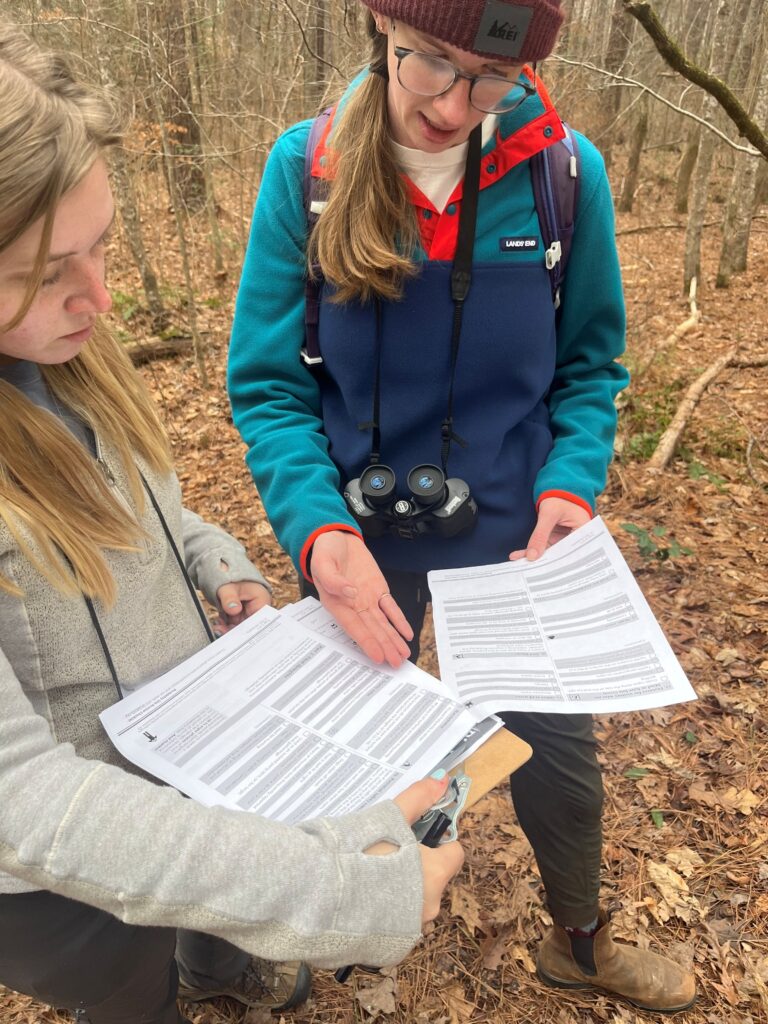By Ella Howie, 2024 TLC Education & Outreach Intern

One of the many questions I had before joining TLC as an Education and Outreach Intern was how to make the outdoors more inclusive without compromising the mission of land conservation. Historically, Western outdoor spaces were often reserved for those with the financial abundance and resources to own land and partake in recreational activities like hunting. These origins have shaped a legacy that is still reflected in current land management. As an organization managing public lands, it is our responsibility to reshape this past and create spaces that are welcoming to everyone.
Balancing conservation and development
Conservation often feels at odds with development, so how do we create accessible spaces without compromising the natural environment? The truth is, that accessibility and conservation can coexist—and should coexist. Human influence on land has transformed all existing forests for good and worse; from Indigenous Americans stewarding trails to post-colonization homogenous Pine Plantations. The truth is, as much as it is comforting to think our forests are pristine and wild, our current reality does not reflect it. However, managing and restoring what forests are remaining, is vital to their future and core to TLC’s mission. Simultaneously, an often underacknowledged part of development is accessibility, where thoughtful development is necessary.
Consider a river crossing: without a bridge, crossing may be possible but muddy and uncomfortable, limiting access to only the most determined visitors. Adding a bridge enhances accessibility while preserving the area’s natural beauty and purpose. A bench beside a creek serves a vital function–to allow rest, slow down, and contemplate a beautiful view. A trail, as an anthropogenic creation, provides direction for hikers and serves two important purposes: preventing people from getting lost by offering a defined path and protecting the surrounding vegetation. By designating specific areas to be walked on, we sacrifice small sections of ground to be trampled to preserve the health of the surrounding ecosystem. Allowing the public to observe and enjoy the natural environment has many mental health benefits other than sparking curiosity and reinforcing the need for conserved lands. Leaving public conserved lands completely untouched can create exclusivity and this fallacy that land can survive independently of human management. In fact, most modern forests require human intervention to maintain their most healthy status, through prescribed burnings or invasive species removal. While it is certainly impossible to meet the demands of all needs, being cognizant of historical wrongs, and fostering a future built on correcting these wrongs is possible.
Learning about accessibility initiatives

During my internship, I quickly discovered the existing projects that emphasize accessibility in outdoor spaces. One of the most enlightening tools I encountered was a rubric developed by Birdability, a non-profit increasing awareness on barriers to the outdoors and, is one of the only in the nation. Their criteria assess trail metrics such as grade, width, surface type, leaf cover, boardwalks, steps, benches, and more. For many hikers, these factors may not seem critical, but for others, they can be the deciding factor in whether or not a trail is safe. Individuals are welcome to submit their observations on their website, which includes their own map across the country.
By using this rubric, TLC’s Education and Outreach team has conducted in-person field surveys to evaluate trail accessibility. Sharing this information publicly not only provides transparency about trail conditions but also helps spark ideas for improving existing infrastructure. Quantifying these aspects informs future decisions, ensuring that more people can have an enjoyable outdoor experience.
Building pathways to inclusivity

One promising initiative underway is the development of our own interactive map displaying trail accessibility metrics from Birdability. While still under construction, this map aims to empower individuals to make informed decisions about their outdoor safety and comfort. It also highlights areas where improvements can enhance inclusivity without compromising conservation goals.
As we continue this work, I encourage you to reflect on the importance of creating pathways—both literal and figurative—to accessibility. By embracing thoughtful development, we can ensure that outdoor spaces are welcoming for people of all activity levels and abilities. Together, we can build a future where conservation and development promote inclusivity, challenging and reshaping cultural perceptions of the ‘wilderness’ and who has access to it.
Note: TLC’s trail evaluation initiative is an ongoing project that our team is working on. We hope to share more updates soon, but please let us know if you have questions or suggestions to assist in this endeavor.
